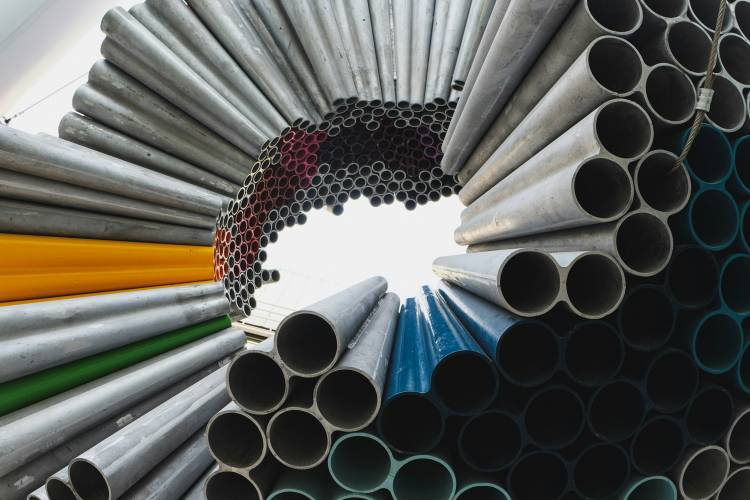Facing challenges from imports from China, India’s steel industry is grappling with a demand fluctuation ahead of the upcoming general elections. Prices of hot rolled coil dropped over three months from Rs 54,275 per tonne in January to Rs 52,960 per tonne in March. The industry contends with an 88% rise in Chinese imports during April to February of the current financial year, alongside increased imports from ASEAN countries, impacting the sector significantly.
The steel industry also faces the impact of rising protectionism and trade wars which complicate international trade dynamics. These geopolitical factors lead to tariffs and trade barriers, disrupting supply chains and affecting price competitiveness. The industry’s struggle is not just with market dynamics but also with the political scenario that shapes global trade relations.
READ | India’s official unemployment figures miss the mark
India, the world’s second-largest steel producer after China, urgently needs steps to mitigate the impact of low-priced imports. With countries redirecting their exports to India, local firms face price pressures that erode their profit margins. Despite global consumption rates, India’s rapid steel consumption growth necessitates higher imports to meet demand.
The Indian steel industry has seen remarkable growth, driven by private sector involvement and governmental reforms. The growth of the steel sector has been significantly bolstered by the liberalisation of industrial policy and proactive government initiatives. These measures have facilitated the entry and expansion of private entities, enhancing the sector’s competitiveness and innovation. The government’s strategic focus on the steel industry underscores its commitment to nurturing a conducive environment for sustainable growth and development.
Challenges facing steel industry
The industry also faces growing pressure to adopt sustainable practices. Environmental concerns surrounding carbon emissions during steel production necessitate innovation and technological advancements. The industry needs to invest in cleaner technologies and explore possibilities like using electric arc furnaces and adopting green hydrogen for steelmaking. Embracing sustainability will not only address environmental concerns but also enhance India’s global competitiveness in the long run.
Steel, essential in construction, infrastructure, and other sectors, contributes about 2% to India’s GDP and employs over 2 million people. Steel’s role in sectors such asconstruction, infrastructure, automobile, engineering, and defence highlights its strategic importance. As a fundamental material underpinning critical industries, steel is central to national development and security, making its production and supply a matter of national priority. Production and consumption rates of steel are often seen as economic health indicators, positioning the industry as a cornerstone of industrial progress.
India’s steel production is marked by significant contributions from Odisha, Jharkhand, and Chhattisgarh, with each playing a crucial role in the nation’s steel output. Other states like Karnataka, Maharashtra, Gujarat, and West Bengal also contribute substantially, underscoring the widespread regional significance of the steel industry across the country.
The global steel industry is dominated by a few key players. China remains the undisputed leader in terms of production capacity and exports, with companies like Baowu Group leading the charge. Other major steel producers include Japan (Nippon Steel & Sumitomo Metal Corporation), South Korea (POSCO), and Europe (ArcelorMittal). These countries have established a strong presence in the global market through constant innovation, strategic acquisitions, and a focus on high-quality steel products. Understanding the strategies and technological advancements of these global leaders will be crucial for Indian steel companies to compete effectively in the international marketplace.
Recognising the sector’s potential, the National Steel Policy targets an output of 300 million tonne by 2030. The Vision 2030 document looks for significant value addition in the metal sector, supported by the Production Linked Incentive (PLI) scheme, especially for specialty steel, enhancing domestic manufacturing.
Technological advancements play a crucial role in propelling the steel industry forward. Continued investments in research and development are essential to improve efficiency, product quality, and cost optimisation. Focus on areas like automation, artificial intelligence (AI), and machine learning can revolutionise production processes and enhance overall productivity. By embracing technological advancements, the Indian steel industry can not only cater to the growing domestic demand for high-quality steel but also become a global leader in innovative steel production.
The steel consumption growth forecast is 12.8% for the current financial year, bolstered by government-infused infrastructure spending. Despite a slowdown due to election periods, analysts view the decline in steel prices as temporary, with ICRA predicting an addition of 38.5 million tonnes in steelmaking capacity by 2027.
The government’s capital expenditure push, with record budget allocations for infrastructure, underpins steel’s critical role in construction, accounting for 62% of its consumption. The industry remains optimistic about sustained growth, expecting a 9% to double-digit rise until 2025.
However, challenges like raw material shortages are anticipated, as highlighted in the ‘Steel Outlook 2030-2047’ report by Deloitte. The industry must secure new iron ore sources and advocate for policies promoting steel recycling and exports. Companies should also seek international partnerships to enhance product quality and reduce dependency on Chinese imports, aligning with the “China plus one” strategy for supply chain diversification.
Ultimately, while India focuses on infrastructure, global demand fluctuations in manufacturing and construction could pressure major steel producers. The government must shield the sector from international downturns and foster domestic demand.

